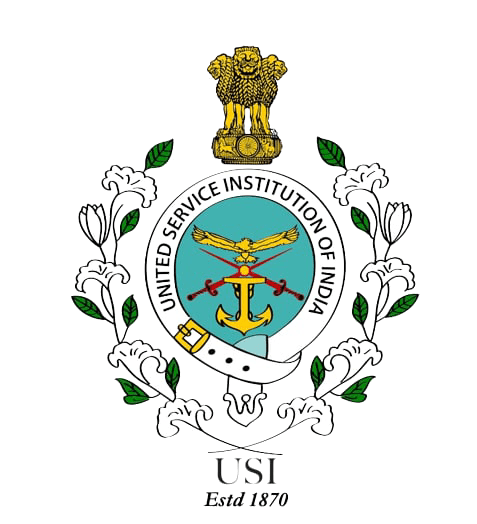The United Service Institution (USI) of India organised a talk by The Chief of Air Staff, Air Chief Marshal VR Chaudhary, PVSM, AVSM, VM, ADC on ‘IAF at 100: Strengths, Weaknesses, Opportunities and Threats’ on the 29 August, 2023 at the USI Auditorium. The event commenced with the hoisting of the Indian tricolour, installed at the USI premises by the Flag Foundation of India, by the CAS, attended by Maj General BK Sharma, AVSM, SM and Bar (Retd), Director General, USI, Maj Gen Ashim Kohli, SM and Bar (Retd), Flag Foundation of India, the members of the USI Governing Council, and the USI Staff.

Opening Remarks by the DG, USI
Maj General BK Sharma, AVSM, SM and Bar (Retd), DG, USI in his opening remarks welcomed the CAS and focused on the SWOT analysis of the IAF and its vision for ‘Vikshit Bharat by 2047’. He emphasised the contribution of the IAF in the defence and security of the nation as the 3rd most powerful and 4th largest air force in the world. The IAF has also emerged as a major aerospace power in the Indian Ocean Region and beyond. It has emerged as a technology-driven force, participating in HADR, UN Peacekeeping missions as well as defence diplomacy. The spectrum of conflict is changing with the emergence of hybrid threats; however, it is to the credit of the IAF to have adopted new technologies through its vision.

Presentation by the CAS
The CAS in his presentation drew attention to the rapid reconfiguration of the global order, driven by the swift integration of technology within the next decade. He said that the emergence of a multipolar world has resulted in significant instability, marking a pivotal moment for India to assume a substantial role on the global stage. He discussed the insights garnered from the conflict in Ukraine. The CAS presented a geopolitical evaluation of Pakistan and China, highlighting the chaotic economic and political state of the former and a discernible escalation in China's assertiveness in global geopolitical matters, accompanied by the expansion of its military capabilities.
He brought out that over the past nine decades, IAF has effectively executed a range of evacuation operations and accomplished many successful missions outside national boundaries, apart from participating in United Nations peacekeeping missions. Additionally, the IAF has The IAF's historical spectrum extends from engagements in World War II to the significant Balakot air strike in 2019, all of which have been instrumental in safeguarding India's territorial integrity and aerial sovereignty.

In his talk, he provided a comprehensive analysis of the Indian Air Force's strengths, weaknesses, opportunities, and threats (SWOT). He delineated the organisation's strengths, such as exposure and mind-set, innovative TTPs, network-centric capability, high training standards, effective human resource management, varied inventory etc. He acknowledged the challenges and weaknesses faced by the IAF, such as the strength of the fighter squadrons, shortage of combat enablers which is being tackled through initiatives like the Indigenous Combat Aircraft (ICA), Medium Range Indicative Aircraft (MRIA), and Advanced Medium Combat Aircraft (AMCA) projects.
He emphasised a multitude of forthcoming opportunities, including the evolution from an air force to an integrated air and space force, strengthening international partnerships, leveraging specialised technologies, augmenting indigenous manufacturing capacity, adopting renewable energy sources, exporting home-grown defence equipment, improving collaborative planning and execution, and reassessing strategic priorities and perspectives. In assessing potential risks, he highlighted the collaborative challenges presented by Pakistan and China, the growing imbalances with China, and threats in the non-physical domain etc.
He concluded by outlining a vision for the IAF, during its centennial decade, underlining the transition from a force driven by threats to one driven by its capabilities. This involves building strong collaborative structures while retaining unique service strengths, embracing technology-driven operations, fostering research and development through partnerships with the private sector, and strengthening strategic thinking through closer ties with civil-military academia and the creation of internal think tanks.
This was followed by a comprehensive round of incisive Q&A session.

The talk was attended by a distinguished audience comprising USI Council Members, serving and veteran officers, members of the strategic community and the academia besides many participants who joined through the digital platform.
